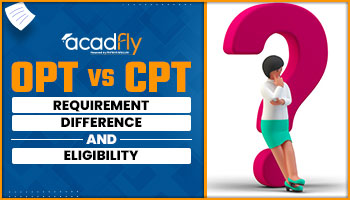

How SAT Scores are Calculated - Many students find it difficult at first to navigate the complexity of SAT results and scores. The SAT, a college preparation test, has a wide range of scores from 400 to 1600. This total score is the result of two critical sections: reading and writing, and mathematics. Both of these parts are scored individually on a scale of 200 to 800. When combined, the comprehensive score places the student in a range of 400 to 1600.
With the SAT undertaking a big digital shift in March 2023, the post-examination process has also changed. The modern, digitalised SAT system now claims to give results in 13-14 days from the exam date. This efficiency provides a silver lining for individuals who are dissatisfied with their performance.
How are SAT Scores Calculated ?
The SAT score report provides detailed insight into a student's performance and includes numerous critical components. Let's look at these components to obtain a better picture:
SAT Total Score: As the name implies, this score combines the results of the two major parts. It oscillates between 400 and 1600.
Sectional Score: This score is based on a student's individual achievement in the Maths, Reading and Writing portions. Each part might result in a score between 200 and 800.
Subscores: Aside from broad categories, subscores break down SAT results and scores for individual question types in the Reading, Writing, and Math domains. These ratings provide granularity, ranging from one to fifteen. They provide insight into the student's individual areas of strength and progress.
Student Percentile: The percentile is an important indicator that shows how a student compares against their classmates. It summarises how they compared to other SAT exam takers.
SAT Score Range
Here is a table that provides an overview of how scores carry out in a wider context:
|
SAT Component |
Description |
Score Range |
|
SAT Overall Score |
The overall of the scores from the two main SAT sections |
400 to 1600 |
|
Section Scores |
|
200 to 800 |
|
Test Scores |
|
10–40 |
|
Cross-Test |
The results indicate how well the applicant applies their ability to interpret text and solve problems in these areas. |
10–40 |
|
SAT Sub Scores |
Reading and Writing: Command of Evidence and Words in Context; Expression of Ideas and Standard English Conventions. Mathematics: The Heart of Algebra, Problem Solving and Data Analysis, and Passport to Advanced Maths. |
200-200 |
Adaptive Testing
The SAT and PSAT-related tests have a multistage adaptive architecture. Each test section—1) Reading and Writing, and 2) Math—is given in two stages. Each stage consists of a module of test questions that contains half of the section's questions (20-25 operational questions and two pretest questions that do not contribute towards score per module).
Students receive half of their section time (32 minutes for Reading and Writing and 35 minutes for Maths) to complete problems in the first module. During that time, students can see next questions, return to previous questions, and alter answers inside the first module before time runs out.
The first module has questions of varied difficulty levels. The second module begins once the first module's time is up. The questions in the second module are of varied difficulty level, suited to the student based on how they fared on the first module's questions, and their section score is dependent on how they performed on all of the questions in both modules combined. As a consequence, students should do their best on every question.
A variety of section scores are achievable regardless of the second module a student watches. Students will neither benefit by viewing a higher difficulty group of questions in the second module, nor will they be disadvantaged by seeing a lower difficulty set of questions. Students can also satisfy state and College Board goals, regardless of which second module they are assigned to.
Scoring
The digital SAT's multistage adaptive test design and Item Response Theory (IRT) methodology enable exact testing of students' knowledge and abilities with fewer questions in less time than traditional paper and pencil examinations. Many national assessments use IRT, including the National Assessment of Educational Progress (NAEP), the Northwest Evaluation Association's Measures of Academic Progress (MAP) suite, the Smarter Balanced Assessment Consortium (SBAC), the Partnership for Assessment of Readiness for College and Careers (PARCC), and a number of state assessments.
The scores students obtain in the digital SAT Suite are a result of multiple factors, including the features of the questions they answered correctly or incorrectly (for example, the difficulty levels of the questions) and the chance that the pattern of responses shows they were guessing. One significant result of this system is that two students who answer the same number of questions correctly in a test section may receive different section scores depending on the characteristics, including difficulty level, of the specific items they answered correctly.
Each administration of the digital SAT Suite assessment draws from the same topic domains and skill/knowledge aspects, ensuring that all students have an equal opportunity to exhibit their abilities. Most students who are doing their best on every question prefer to guess rather than leave a question blank, especially if they can remove one or two response alternatives before guessing.
Each module has two pretest questions. The inclusion of these questions enables the College Board to collect performance data and assess their viability for use in future examinations. Students' replies to these pretest questions have no bearing on their final results.
Comparing Digital and Paper Test Scores
While the digital SAT Suite uses a different scoring mechanism than paper testing, what it measures remains the same. The digital examinations continue to assess high school students' reading, writing, and arithmetic knowledge and abilities, which are most important for college and job preparedness. The digital SAT is still evaluated on a range of 400 to 1600, and instructors and students can utilise digital SAT Suite results to track progress over time.
Prior to the debut of the digital SAT, two concordance studies determined that results from the digital SAT are equivalent to scores from the paper and pencil SAT and may be used in the same way for college admissions and other reasons. For example, a score of 1050 on the digital SAT is equivalent to and has the same significance as a score of 1050 on the paper and pencil SAT.
Furthermore, the SAT College and Career Readiness criteria of 480 for the Reading and Writing part and 530 for the Math section remain unchanged with the transition to digital testing. As we collect real college success data from students who took the digital SAT Suite examinations, we will scientifically re-examine all standards to validate and improve them as necessary.
Total Scores and Section Scores
Students taking the SAT will obtain a total score ranging from 400 to 1600. This total score is the sum of the two part scores (Evidence-Based Reading and Writing and Math), each accounting for half of the total (200-800). The Evidence-Based Reading and Writing section score is split evenly between the Reading Test (52 questions) and the Writing and Language Test (44 questions), while the Math Test (58 total questions, 38 calculator and 20 no-calculator) accounts for the entire Math section score.
Raw Scores and Equating
The process of section scoring begins with the computation of raw scores, which indicate the number of right answers. Students earn one point for each correct answer, and unlike previous versions of the SAT, no points are removed for erroneous responses. These raw scores are then transformed to scaled scores using a process known as "equating," which adjusts raw scores higher or lower based on the difficulty level of a certain exam (scaled scores are not based on student group performance within a specific SAT administration).
For example, a Math Test raw score of 30 (out of 58) can be translated into a Math section score of 530 on one edition of the SAT and 580 on another. A raw Math Test score of 57 is sufficient for a flawless Math section score of 800 on some versions of the test, while on others, a student must successfully answer all 58 questions in order to obtain the highest possible score.
Calculation of test scores
The Reading Test, Writing and Language Test, and Math Test all have test scores ranging from 10 to 40, and raw values serve as the starting point for test score calculations. Raw scores are converted into test scores after correcting for test difficulty. A Reading Test score of 25 or 26 can be obtained by properly answering 26 of the 52 questions. 30 accurate answers on the Writing and Language Test's 44 questions might result in a score of 29 or 30. The section score for Evidence-Based Reading and Writing is calculated by adding the scaled Reading Test, Writing and Language Test results, and multiplying by 10. The examples shown above might result in a section score of 540, 550, or 560, depending on the difficulty of the exact test taken by the student.
Calculating Subscores
Seven subscores ranging from 1 to 15 are calculated from chosen questions on one or more of the SAT's three examinations. The Writing and Language Test contributes to four of these seven sub-scores: Expression of Ideas (24 questions), Standard English Conventions (20 questions), Command of Evidence (8 questions), and Words in Context (8 questions). The Reading Test contains questions that contribute to the Command of Evidence and Words in Context subscores (10 questions each, for a total of 18 questions for these sub scores).
The Math Test is divided into three subscores: Heart of Algebra (19 questions), Problem Solving and Data Analysis (17 questions) and Passport to Advanced Math (16 questions). Subscores are calculated using the number of correct answers in each category (raw scores). The differences in the amount of questions in each section demand this score scale. For example, correctly answering 16 questions in each of these seven areas could result in scaled subscores of 10 for Expression of Ideas and Standard English Conventions, 11 for Heart of Algebra, 13 for Words in Context, 14 for Command of Evidence, Problem Solving, and Data Analysis, and 15 for Passport to Advanced Mathematics.
The exact subscores a student earns are determined by the specific test and may be greater or lower than the example provided above.
Calculation of cross-test scores
Students will also obtain cross-test scores for certain items on all three of the SAT's individual examinations. The cross-test scores for Analysis in History/Social Studies and Analysis in Science are computed by combining 21 questions from the Reading Test, 6 questions from the Writing and Language Test, and 8 questions from the Math Test, for a total of 35 questions for each score. Raw scores (one point for each right answer) are scaled to a range of 10 to 40 for each cross-test score before being adjusted for test difficulty.
32 accurate answers on both Analysis in History/Social Studies and Analysis in Science, for example, might yield a cross-test score of 38 on the former and 37 on the latter.
Upcoming Changes in SAT Scoring
The College Board stated in early 2022 that the SAT will transition from a paper-and-pencil test to a digital test done on a computer. This shift is expected to begin in 2023 for overseas students and 2024 for students in the United States. Switching from a conventional to a digital scoring method will provide various benefits, including the ability for students to obtain their SAT results in days rather than the current wait period of weeks.
Based on accessible statements and papers, the College Board is aiming to strike a balance between providing meaningful information and offering simplified information, and time will tell whether these more extensive scores will be missed or if the shift to lower score reporting would be welcomed.
Conclusion
To summarise, the SAT evaluates students on a 400-1600 scale, integrating scores from two key sections: Reading and Writing and Mathematics, which are each rated between 200 and 800. With the digital format, SAT exam results are now available within 13-14 days of the exam. Candidates may retrieve their results through their College Board profile, and there are numerous options for distributing scores to their preferred universities. To improve their university application approach, applicants must first comprehend the score breakdown, which includes raw scores, percentiles, and validity.
FAQs
Q.1. How are SAT scores calculated?
Your overall score ranges from 400 to 1600. The total score is the sum of your Reading, Writing, and Math scores. These two part scores range from 200 to 800. Both components contribute equally to the overall score.
Q.2. Is 1200 considered a decent SAT score?
The average SAT score is 1059, therefore a 1200 SAT score is barely over normal. It makes you a competitive applicant at a large number of schools, which is the primary aim, thus a 1200 SAT score is ideal.
Q.3. Does Harvard accept a 1200 SAT?
There is no definite SAT requirement at Harvard, although they do desire at least a 1460 to be considered.
Q.4. What is an appropriate SAT score for Indian students?
In India, where the SAT is an important part of college admissions, understanding what constitutes a competitive score is key. The average SAT score is about 1050. To stand out, strive for a score of 1350 or above, putting you in the top 10% of test takers.
Q.5. Is the SAT tougher in India?
The SAT exam is a standardised examination given by individuals who want to continue higher education overseas. Many Indian students find the test challenging because of foreign question patterns, different rules, language barriers, and other considerations. However, with enough preparation and exam knowledge, you can easily pass the examination.
Frequently Asked Questions









